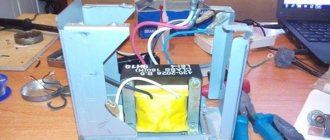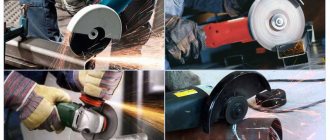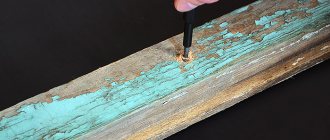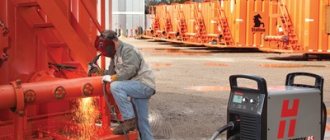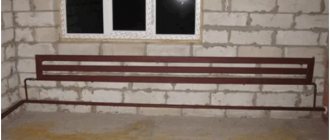Home / Welding technique
Back
Reading time: 2 min
0
768
There are many ways to weld copper pipes: induction joining of copper pipes, capillary joining, various tees.
At the same time, any welding of copper pipes has its own subtleties. In this article, we will describe in detail what steps to take to make the copper bypass connection successful yourself.
- Methods for connecting copper pipes
- High degree method
- Low temperature method
- How to solder copper-based elements
- Method of welding copper pipes
- Conclusion
Methods for connecting copper pipes
One of the simplest methods is tees for soldering copper pipes. They are easy to use and installation does not require specific skills or mechanisms. But there is one caveat: welding with tees can only be done on pipes with threads.
What to do if you need to connect standard smooth copper bypasses? We can say that it is possible to attach copper pipes using a hair dryer.
But this is not a very good idea. Yes, this technique can be useful (if you have a powerful hair dryer), but there is a chance that you will overheat the metal.
There is also induction welding of copper pipes. It’s easy to make at home, so we won’t dwell on it too much.
It will be enough to watch the video review. There is also capillary welding of a copper bypass. It includes welding at high and low temperatures.
To join the parts, you must have welding solder and a standard gas torch. Both of these methods are commonly used and easy to do at home, so we'll discuss brazing copper pipes using a torch.
What are the features of metal
Despite the high cost, copper products continue to be used.
This is explained by the following material characteristics:
- Safety for humans and the environment. The metal has antiseptic properties, which allows it to be used in the creation of water supply systems.
- Insensitive to ultraviolet radiation and aggressive substances.
- Resistant to changes in pressure and temperature.
- Plasticity, ensuring ease of installation.
- Unlimited product lifespan.
High degree method
Melting copper pipes using high temperature is often used. This capillary connection of the copper bypass occurs when the temperature is greater than 500°. The work uses conventional alloys for soldering copper pipes in bundles.
They must contain hard-melting metals; it is better that the alloy for soldering is made of copper. Thanks to this solder, a good and strong connection will be formed. This welding method is also called solid welding.
Welding copper pipes with a hard alloy for soldering is achieved by heating the metal to approximately 750°. In this case, the solder should melt from the heat of the torch, and not from the heated bypass.
This is an important rule. This method is reasonable if it is necessary to connect pipes that will conduct centralized gas or high-temperature liquids.
Safety precautions when working with copper
When soldering pipelines at home, observe the following rules:
- Use protective gloves. Copper parts heat up quickly, so the master risks getting burned. This is especially true for pipe sections less than 30 cm long.
- Be careful when using flux. The product contains acid and causes a chemical burn if it comes into contact with human skin. In this case, it is necessary to stop welding work and wash off the composition with a large amount of soap solution.
- When working, use a protective suit. Clothes made from synthetic fabrics that are sensitive to heat are not suitable. It is better to use a thick cotton suit.
- The room in which work is carried out is constantly ventilated. Otherwise, you can be poisoned by flux vapors.
- The finished products are thoroughly washed with hot water, removing any remaining chemical compounds.
We recommend reading: How to solder a cooling radiator yourself
How to solder copper-based elements
In addition to the metal itself, you need to purchase standard cheap devices and components. To protect the elements, a paste-like mineral is useful. A brush to apply it. Hard alloy for soldering (soft alloy is acceptable, depending on the welding option).
When choosing an alloy for hard welding, study the composition; it should not contain lead. When purchasing an alloy for soldering soft welding, in addition to the components tin and lead, it may also contain silver.
Regardless of the task, there is an alloy on sale for soldering a three-millimeter copper bypass.
Among the devices you will need a device for cutting metal; you can use it to cut pipes. Please note that the pipe cutter must be of good quality so that it does not bend the metal when cutting or wrinkle the edges.
You also need a tool to remove the pasty mineral and a brush to clean the bypass inside. You will also need a tool to expand the pipes.
It is important to remember about the most necessary device - the burner. The flame must be adjusted to a narrow direction.
If you cannot work with open fire, but have the financial means, then buy a soldering iron for copper pipes. It can be connected to a regular outlet.
Such a device can work with any solder. It can be taken as a replacement for other tools, but you will need to buy a high-quality device.
Tools
0 votes
+
Vote for!
—
Vote against!
At home, the need most often arises for copper welding when installing heating systems and water pipes. Copper is a good material for water pipes because it has a smooth surface, does not corrode, provides good water flow, does not contain harmful substances, does not become overgrown with deposits, and has bactericidal properties. Copper water pipes can last a very long time, at least 50 years.
Welding of non-ferrous metals
Welding is the process of forming permanent joints by establishing interatomic bonds between the elements being welded during their partial or general heating, or plastic deformation. For welding, it is customary to use different energy sources: laser radiation, gas flame, electric arc, electron beam, ultrasound and friction.
Welding non-ferrous metals differs significantly from welding steels because non-ferrous metals usually have higher thermal conductivity and react in a molten state with gases contained in the atmospheric air. To prevent the occurrence of such negative consequences, it is necessary to more carefully select welding materials, prepare parts for welding and strictly follow the welding instructions.
The development of technology currently makes it possible to carry out welding not only in industrial and manufacturing enterprises, but also in space, under water and at home in the open air. However, the welding procedure for non-ferrous metals, including copper welding technology, is quite specific and depends largely on the physical and mechanical properties of the material.
Properties of copper
Copper is used to make pipelines for various machines, vessels, chemical equipment, conductive parts and various parts. This material is characterized by high electrical and thermal conductivity and is also resistant to corrosion. Copper welding technology is a rather complex process.
The difficulties of the procedure are caused by the tendency of copper to oxidize in the molten state with the formation of a refractory oxide and absorption of gases, significant thermal conductivity, the high linear expansion of copper when heated, which is one and a half times higher than that of steel, as well as increased fluidity.
The weldability of copper is impaired by the presence of bismuth, sulfur, lead and oxygen. Lead and bismuth give this non-ferrous metal redness and brittleness; in the form of cuprous oxide, oxygen causes the formation of cracks and brittle layers of metal in the thermally affected area.
The procedure for welding copper at home is influenced by oxygen, which is absorbed from the atmosphere. But, nevertheless, copper products are widely used in various industries, so several methods for welding this metal have been created.
Gas welding of copper
If the procedure technology is followed, copper can be welded perfectly using gas cylinders filled with acetylene. If you perform welding according to all the rules and then forge the seam, you will get a high-quality welded joint. In this case, the tensile strength of the weld reaches 17-22 kgf per square millimeter, when the maximum tensile strength of copper will be 22-23 kgf per square millimeter.
Since the thermal conductivity of copper is quite high (five times more than iron), a high-power flame is required for its welding: 150 l/hour if the material thickness is less than 10 millimeters and 200 l/hour if the thickness is more than 10 millimeters. When welding thicker units, welding must be done using two torches. Use one of them, with a capacity of 150-200 l/hour, for heating. A second burner with a capacity of 100 liters per hour is needed for welding the workpieces itself.
To reduce heat removal from below and above the metal being welded, it is recommended to lay asbestos sheets. It is customary to use a reduction flame in this copper welding method, the core of which is oriented to the edges of the metal almost at a right angle. To reduce the formation of cuprous oxide and prevent the formation of hot cracks, it is necessary to weld as quickly as possible, without interruptions. At the same time, strictly monitor the preservation of the reduction flame.
Immediately before welding copper parts, tack welding is not used. Welding of the product must be carried out in a special assembly and welding device. As an additive when welding, use wire made of electrical copper, or a metal that contains deoxidizers: no more than 0.2% phosphorus and close to 0.15-0.3% silicon. The maximum permissible filler wire diameter is 8 millimeters.
When welding, heat must be distributed in such a way that the wire melts before the edges of the base metal. In this case, the filler material will be deposited on the edges, which begin to melt. The bevel of edges on sheets with a thickness of more than 3 millimeters is performed at an acute angle of 45 degrees. Before welding, the edges must be cleaned to the shine of fresh metal, or pickled with a solution of nitric acid and rinsed in water.
To properly use gas cylinders, you need to watch a video about copper welding. To refine the grains of the deposited metal and increase the density of the welds after welding, material that is up to 5 millimeters thick is forged in a cold state, and copper with a thickness of more than 5 millimeters is forged at a temperature of plus 200-300 degrees.
The seam is annealed after forging the seam at a temperature of about 500-550 degrees Celsius with rapid cooling with water. To prevent the formation of cracks, forging should not be carried out at temperatures above 500 degrees, because copper becomes brittle at such temperatures.
Argon arc welding of copper
Fusion arc welding is widely used to create copper welded structures. In order to obtain a high-quality weld, it is recommended to use shielding gases, which are high-grade argon or a mixture of argon and helium (50-75% argon). Arc welding of copper in production and at home is most often performed with a tungsten electrode.
As an additive, it is necessary to use a narrow profiled spacer or wire, which is laid end-to-end. Welding copper with argon and a tungsten non-consumable electrode has good arc stability. Manual arc welding of copper is used when connecting units of small thickness (up to 4 millimeters) and in hard-to-reach places.
Tungsten electrode welding is performed using direct current. The electrode must be oriented strictly in the plane of the joint. In the case of welding metal that has a thickness of more than 4-5 millimeters, it must be preheated to plus 300-400 degrees. Before welding, it is recommended to strip the edges of the base metal and the electrode wire to fresh metal.
Copper, which has a thickness of up to 5-6 millimeters, can be welded without cutting the edges. When welding workpieces with a thickness of 2 - 3 millimeters, it is not necessary to heat the base metal. But the technique of electric welding of copper thicker than 4 millimeters involves heating to plus 300-400 degrees. The technology of welding non-ferrous metals, including copper and alloys, allows the use of consumable electrodes.
Soldering copper
Copper, unlike steel, is in most cases more expedient to solder than to weld. Especially when it comes to thin-walled copper pipes, which are used for various systems - heating, plumbing, gas and refrigeration. This is due to a number of features of copper welding.
With some effort, even a novice craftsman can solder copper, while without thorough preparation it is unlikely to be welded. Soldering does not change the structure of the metal and does not require expensive equipment, as required by the welding procedure.
Soldered connections, with the strictest adherence to technology and the use of suitable materials, are quite strong and heat-resistant to withstand the mechanical and thermal load intended for them.
When soldering copper, it is customary to use lap joints, which ensure high strength of structures even in situations where soft solders, which have relatively low strength, were used. To ensure a satisfactory level of solder joint strength, you must provide at least 5 millimeters of overlap. In practice, higher values are usually used to ensure a good safety margin.
Types of solders
Copper alloys and the metal itself can be soldered using high-temperature and low-temperature soldering. There is a lot of equipment for copper welding and soldering, as well as a variety of hard and soft solders, which provide good quality soldering of parts and pipes. It is preferable for low- and high-temperature soldering to use solder and flux from the same manufacturer.
Low temperature solders
The use of low-temperature solders allows soldering to be performed at a temperature that has little effect on the strength of copper, but provides seams with poor mechanical characteristics. High-temperature solder provides greater strength to the seams and allows for high operating temperatures of the system. However, at the same time, the copper is annealed, and more skill is required, because the metal is easy to burn through.
Low-temperature soldering is considered the most popular in heating and water supply. Considering the large contact area of pipeline elements, low-temperature solders can provide sufficient strength of connections.
There are the following low-temperature lead-free solders, which guarantee a fairly high quality of copper soldering: tin alloys with copper, antimony, bismuth, silver, selenium. The lion's share of them (up to 97%) is tin, the rest falls on other elements. For low-temperature soldering of this metal, lead-tin solders are generally suitable, but if you need to solder a pipeline for drinking water, it is recommended to avoid them due to the harmful qualities of lead.
Silver-containing solders, for example, S-Sn97Ag3, which contains 97% tin and only 3% silver, have the best technological properties. Copper-containing solders, including S-Sn97Cu3, which contains 97% tin, have slightly worse, but still satisfactory qualities.
Three-component solders are also known in practice, which contain tin (95.5%), copper (0.7%) and silver (3.8%). A universal and widely used solder is tin-copper. However, such a substance has one significant drawback - high cost. Such solder compositions are responsible for good quality seams and high strength, durability and reliability of water supply and heating systems.
High temperature drinks
It is recommended to resort to high-temperature solders only when there is a special need for this. For example, if it is necessary to operate a brazed pipeline at a high temperature (above plus 110 degrees), in a heating system using steam, which is characterized by high pressure.
For soldering a gas pipeline made of copper pipes, exclusively high-temperature soldering is used, because it provides a connection with the highest level of strength and reliability, but low-temperature soldering is not used in gas supply.
In the case of soldering copper products to each other, copper-phosphorus solders do not require the mandatory use of fluxes. Another advantage of this solder: the parameters of thermal expansion of the copper of the soldered parts and the solder are almost identical. Self-fluxing solder is widely used, which consists of 92% copper, about 6% phosphorus and 2% silver. All brazing solders are available in the form of a solid rod.
Due to the fragility of this connection, which arises due to the chemical reactions of phosphorus with certain metals, copper-phosphorus solders cannot be used for soldering non-ferrous metals with a nickel content of more than 10%. Also, installing these solders is not recommended for soldering aluminum bronze. It is not recommended to use them when soldering cast iron and steel.
Fluxes for welding
When welding and soldering, it is recommended to use special copper welding devices and fluxes that protect the molten metal from oxidation, dissolve and convert the resulting oxides into slag. They are introduced into the weld pool. In addition, fluxes are used to cover the ends of the edges of welded units and filler rods, as well as the reverse side of the base metal.
For low-temperature soldering, compositions containing zinc chloride are predominantly used as fluxes. But when buying flux, you need to pay special attention to its composition. Fluxes consist of calcined borax, silicic acid, sodium phosphate and charcoal.
There are many effective fluxes for soldering copper; you simply need to purchase any composition intended for this purpose. For example, F-SW 21 flux or rosin vaseline paste, which consists of rosin, technical petroleum jelly or zinc chloride. Paste is considered the most convenient form for applying to a part.
Now you understand that welding copper differs from the procedure for welding other metals due to the characteristics of this material. In some cases, it is more appropriate to solder copper. In order to deoxidize the metal and remove oxides that form during the melting of copper into slag, it is recommended to use solders and fluxes.
Method of welding copper pipes
First, using a metal cutting device, cut off parts of the pipe of the required length. After cutting, the edges of the bypass may have jagged edges; these must be removed using a device that removes paste-like minerals from the metal.
Next, you need to clean the inside of the pipe using a brush of a certain length. It is necessary to degrease the coating using any solvent. Next, you need to make the pipe wider with a device in order to connect the pairs of pipes together.
First make sure that the pipes are connected together tightly enough. There should be a small gap. We cover the metal with a paste-like mineral (only in the area where the pipes meet).
What mistakes are often made
Despite the fact that the entire soldering process consists of simple steps, novice craftsmen can make the following mistakes:
- Formation of defects on the surfaces of welded pipes. Protrusions may appear when cutting elements. They reduce the strength of the seam, contributing to the occurrence of leaks.
- Contamination of the connecting areas. After slicing, you should not skip the degreasing procedure.
- Wrong choice of technological gap width. For pipe cross-sections of 60-108 mm, the distance should be 0.7-5 mm.
- Insufficient heating of the metal. In this case, the filler material cannot firmly adhere to the base. The seam quickly collapses even with minimal loads.
- Uneven distribution of flux. Traces of oxide remain on the surfaces, reducing the strength of the seam.
- Overheating of the treated area. Promotes the evaporation of soldering acid and the appearance of scale.
- Displacement of parts when the connection is not cooled. Before checking the quality of work, make sure that the pipe is cooled. Otherwise, the seam will be deformed.
- Failure to comply with safety regulations. Failure to use skin, respiratory and eye protection may result in injury.
A novice master is recommended to carry out work under the guidance of a professional.

